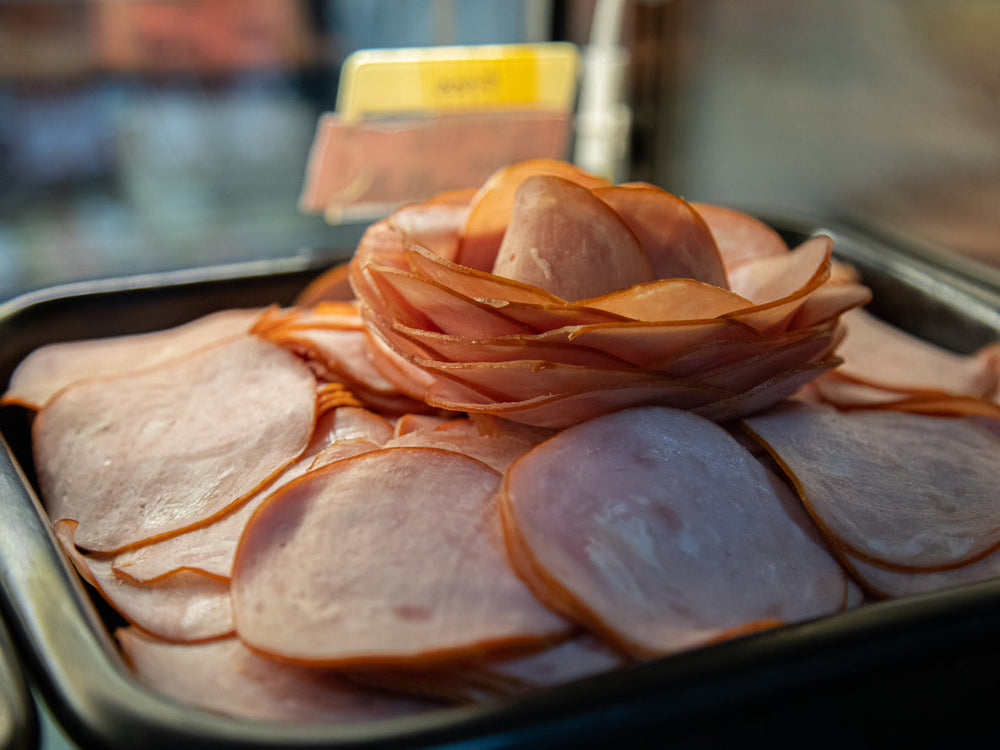Bacon is a beloved breakfast staple in many countries, but when it comes to British bacon versus American bacon, there are some notable differences in both taste and texture. The way each is prepared, cut, and served varies, making them distinct in their own right. Let’s take a closer look at how British bacon and American bacon compare.
The Cut of Bacon
British Bacon:
In the UK, bacon is typically made from the back of the pig. This is known as "back bacon." It has a leaner texture and a more pronounced layer of fat around the edges, giving it a deliciously rich taste. The British style is often thicker and slightly less crispy than its American counterpart, allowing it to retain some moisture and tenderness. One notable example of British bacon is Crown British Sliced Back Bacon Rashers, which exemplifies the country's approach to quality and flavour.
American Bacon:
On the other hand, American bacon is usually made from the belly of the pig, which gives it a much fattier texture. American bacon strips are thinner and crispier, as they are often cooked to a higher degree of crispness. The extra fat in American bacon contributes to its signature flavour, and the texture is crunchy rather than chewy.
Texture and Thickness
The difference in the cut of meat also affects the texture and thickness of the bacon.
British Bacon:
British bacon is typically thicker and more substantial. The slices are often about 1/4-inch thick, providing a more satisfying bite that combines both lean meat and fat.
American Bacon:
American bacon, on the other hand, is usually much thinner. The slices can be paper-thin, making it crisp up quickly during cooking. Its delicate texture and ability to crisp up easily make it ideal for dishes like bacon bits on salads or crispy bacon strips in sandwiches.
Flavour Profiles
British Bacon:
British bacon, like Winstons Irish Back Bacon Rashers, tends to have a subtle, smoky flavour, enhanced by the curing process that involves dry-salting and sometimes the use of wood smoking. The thicker cuts and leaner texture allow the natural pork flavour to shine through, with a satisfying balance between saltiness and smokiness.
American Bacon:
In contrast, American bacon has a stronger, more intense flavour due to the higher fat content and its more aggressive curing process. The bacon is often sweeter, as it is sometimes glazed with brown sugar or maple syrup before cooking. The smokiness in American bacon is also more pronounced and can sometimes be overpowering compared to the more restrained British version.
Breakfast Delights

British Bacon:
In Britain, the combination of bacon and sausages is a central feature of the full English breakfast, a meal that often includes eggs, baked beans, grilled tomatoes, black pudding, fried mushrooms, and toast. The sausages and bacon play a vital role in creating the hearty and comforting flavours that have become synonymous with British mornings.
American Bacon:
The American breakfast plate, by comparison, focuses more on a sweet-savory balance, with pancakes, eggs, and a side of crispy bacon or sausage links. In the US, bacon often takes a starring role as the crunchy, salty element that contrasts against sweeter components like syrup or fruits.
Shelf Life and Preservatives
British Bacon:
Typically, British bacon uses fewer preservatives, relying more on curing and smoking to enhance flavour and preserve the meat. Although most traditional British bacon is sold in vacuum-sealed packs, it generally has a shorter shelf life, often lasting around 7 to 10 days if stored properly in the fridge.
American Bacon:
American bacon often contains more preservatives, particularly nitrates and nitrites, to extend its shelf life. This makes American bacon last much longer on the shelf – up to several weeks in some cases. Additionally, the packaging often includes added chemicals that maintain its fresh appearance for extended periods. The shelf life can be significantly longer, especially if vacuum-sealed or kept in its original packaging.
Conclusion
Deciding whether British or American bacon is better ultimately comes down to personal preference. If you prefer a leaner, thicker slice of bacon with a more balanced flavour, British bacon may be your go-to. However, if you're a fan of crispy, rich, and fatty bacon that packs a punch of flavour, American bacon is likely to satisfy your cravings.
Whatever side of the Atlantic you find yourself on, bacon remains essential to the breakfast experience, offering a delicious glimpse into each country’s culinary history.


 Christmas 2025
Christmas 2025
 Frozen Food
Frozen Food
 Baking
Baking
 Beans, Peas, Soups & Tins
Beans, Peas, Soups & Tins
 Biscuits, Crackers & Cookies
Biscuits, Crackers & Cookies
 Candy / Sweets
Candy / Sweets
 Crisps & Snacks
Crisps & Snacks
 Chemist / Pharmacy
Chemist / Pharmacy
 Desserts
Desserts
 Gravy, Stock & Paste
Gravy, Stock & Paste
 Haggis
Haggis
 Indian Sauces, Paste and Pickle
Indian Sauces, Paste and Pickle
 Jams & Preserves
Jams & Preserves
 Poppy Appeal
Poppy Appeal
 Pot Noodles & Super Noodles
Pot Noodles & Super Noodles
 Scone Mix
Scone Mix
 Gluten-Free / Free From
Gluten-Free / Free From
 Tea Accessories
Tea Accessories
 Teapot & Tea sets
Teapot & Tea sets
 Tea For One
Tea For One
 Sugar & Creamer
Sugar & Creamer
 Tableware
Tableware
 Serveware
Serveware
 Plates & Trays
Plates & Trays
 Bowls
Bowls
 Cups & Saucers
Cups & Saucers
 Mugs
Mugs
 Silverware
Silverware
 Dinnerware - Accessories
Dinnerware - Accessories
 Dinnerware - For Pets
Dinnerware - For Pets
 Victoria Eggs - Hand-Drawn UK Homeware
Victoria Eggs - Hand-Drawn UK Homeware
 Jewelry & Accessories
Jewelry & Accessories
 Sale
Sale
 Christmas Gifts
Christmas Gifts

